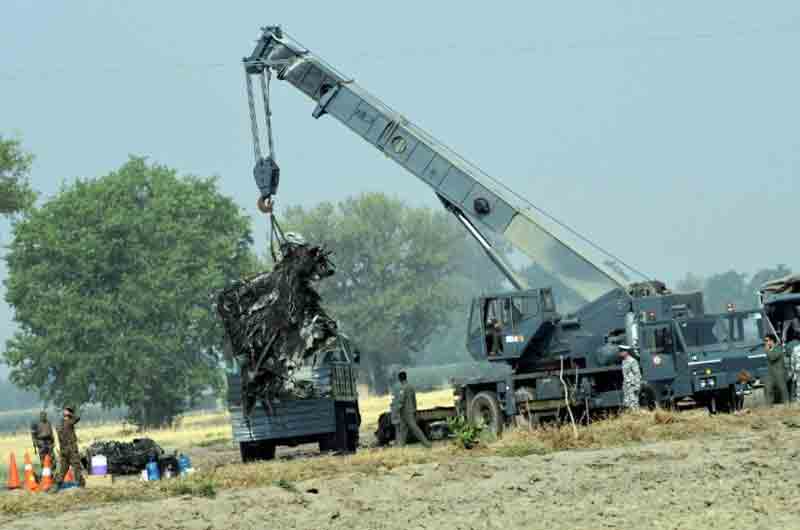Operation Sindoor is facing a credibility crisis, evolving into one of the most notable post-conflict information confrontations in South Asian military history. Chinese defense strategist Cheng Xizhong has initiated a thorough and relentless critique of India’s recent assertion that it shot down six Pakistani aircraft in May.
Cheng, a former military diplomat and senior UN observer, characterized the Indian announcement as mere “self-amusement,” directly challenging the foundation of New Delhi’s narrative — the glaring lack of verifiable evidence.
India’s Air Chief Marshal Amar Preet Singh stated that Indian forces, protected by the Russian-made S-400 Triumf air defense system, had destroyed “five fighters and one large aircraft” belonging to the Pakistan Air Force during intense aerial confrontations.
According to the Indian narrative, the destruction of airborne command post incapacitated Pakistan’s real-time battle management capabilities at a crucial moment in the operation. However, Cheng dismissed these claims as “comical, implausible, and unconvincing,” pointing out that over three months had elapsed without a single image of wreckage, no radar or telemetry data, and no independent satellite verification.
He also highlighted private acknowledgments from senior Indian officials regarding substantial losses, which may include frontline multirole fighters, during engagements primarily characterized by beyond-visual-range (BVR) missile confrontations that were determined long before the opposing pilots came within visual range.
Cheng contended that without undeniable physical proof of Pakistani losses, India’s narrative risks being perceived internationally as a meticulously orchestrated strategic deception aimed at bolstering domestic morale rather than a genuine account of combat.
This dispute over kill claims exemplifies the larger battle for information supremacy across the Indo-Pacific region. In contemporary airpower, success is no longer gauged solely by the number of airframes destroyed, but by the credibility, speed, and transparency with which those kills can be substantiated. In this case, Pakistan’s rapid technical disclosures have positioned it in a more credible stance than India, which has yet to provide even remnants of wreckage from the aircraft it asserts to have shot down.
India now faces a challenge that extends well beyond safeguarding export opportunities for its own indigenous and co-produced systems. The credibility of its deterrent posture against Pakistan and China hinges on the belief that its air defenses are impenetrable and that its pilots can match or surpass the capabilities of any regional adversary. Cheng’s dismantling of the Indian assertion, along with Pakistan’s counter-narrative, directly undermines that belief during a time of increased border tensions on both the western and eastern fronts.
The clashes in May took place against a backdrop of maximum readiness, with both air forces operating in a fully mobilized state. Pakistan’s deployment of the J-10CE was specifically designed for long-range missile engagements, utilizing the PL-15E’s range to compel Indian fighters and support aircraft into defensive positions. India’s operational debut of the S-400 in combat was intended to showcase its capability to enforce a no-fly zone deep within Pakistani territory.
However, Cheng argues that the battlefield outcomes present a different narrative — one that is considerably less flattering to Indian air defense capabilities. If confirmed, the destruction of S-400 batteries would have significant implications for the global perception of Russian-made air defense systems, many of which are stationed in NATO-adjacent countries and in unstable regions like the Middle East.
The situation would also motivate competing militaries to intensify their offensive electronic warfare, stand-off weaponry, and saturation strike strategies aimed at neutralizing such defenses early in a conflict.
The events in May reinforced a doctrinal transformation already in progress in contemporary air combat — BVR engagements now dominate the kill chain, rendering maneuver-based dogfighting increasingly uncommon in peer-level conflicts.
Missiles like the PL-15E, when combined with AESA radar, sophisticated electronic warfare systems, and secure high-speed datalinks, facilitate a coordinated strike package capable of dismantling an opposing force before it can mount an effective response.
Cheng perceives Pakistan’s achievements as evidence that its air force has attained a high level of integrated capability, while India continues to encounter challenges in fully synchronizing its platforms, sensors, and weapon systems under contested conditions.
The credibility clash is now resonating in procurement discussions from Jakarta to Cairo, with defense planners scrutinizing the May conflict for insights on which systems are genuinely combat-credible.
The eventual interpretation of these occurrences could influence billions of dollars in future fighter and missile contracts and significantly affect the regional balance of airpower.
For New Delhi, the strategic challenge is two-fold — to maintain operational readiness and to restore confidence in its official combat narratives.
Without concrete evidence of Pakistani losses, there is a risk that this incident will be added to the extensive list of disputed air combat claims, remembered more for political narratives than for battlefield truth.
Cheng’s involvement ensures that the dispute remains active, placing India in the difficult position of either providing proof or facing the perception of fabricating a victory.
The struggle for narrative control has now entered a new phase, with Pakistan issuing a direct and unprecedented challenge — a Joint Aircraft Inventory Audit.
This proposal aims to have both nations fully disclose their air fleet inventories for independent international inspection, allowing for a comparison of operational figures before and after the conflict to confirm actual attrition.
The audit proposal is not merely symbolic; it represents a strategic maneuver in the information domain intended to place the onus of proof directly on New Delhi. Should India decline, it risks being perceived globally as reluctant to validate its assertions. Conversely, if it agrees, it may confront the uncomfortable reality regarding the true impact of Operation Sindoor.
From Pakistan’s viewpoint, consenting to such an audit would portray it as the more transparent participant in the South Asian airpower landscape, potentially transforming the post-conflict narrative from defensive denial to proactive verification. Additionally, this proposal paves the way for a groundbreaking approach to post-conflict transparency in a region where unverified combat claims have historically gone unchallenged.
Unverified reports already indicate some reluctance within Indian defense circles regarding the allowance of comprehensive inspections of the Rafale fleet by manufacturer audit teams. There is ongoing speculation that at least one Rafale was lost during the initial hours of the operation — a loss that, if confirmed in a joint audit, would represent the first Rafale combat kill in the region. Such a finding would raise significant questions about IAF pilot training standards, operational strategies, and maintenance protocols for India’s most advanced fighter platform.
In the harsh environment of regional air combat, where future conflicts could be resolved in mere days or even hours, credibility serves as a strategic asset just as much as the missiles carried by a fighter. Thus, Operation Sindoor has transcended being merely a military event — it has become a critical test of transparency, narrative control, and the future of deterrence in South Asia.
Discover more from Defence Talks | Defense News Hub, Military Updates, Security Insights
Subscribe to get the latest posts sent to your email.





